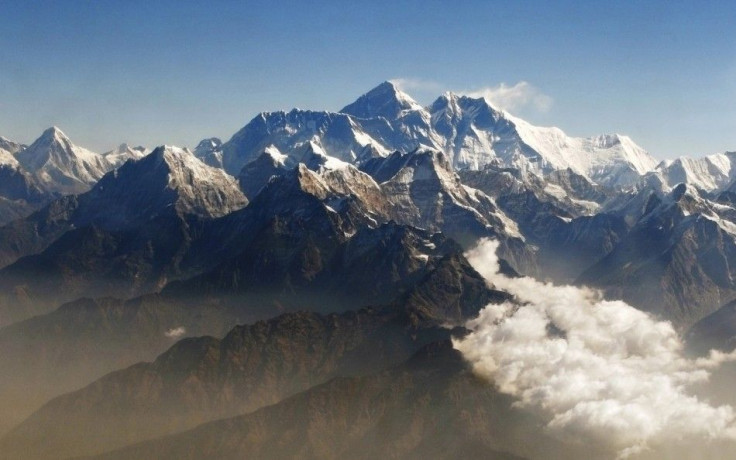Mount Everest ?Death Zone? Claims Four In Deadly Weekend

Four climbers were pronounced dead while returning from the summit of Mount Everest over the weekend, Nepali officials said. At least one other remains missing after a windstorm swept through the mountain on Saturday.
Around 340 climbers belonging to 33 different teams received official permits to climb the world's highest peak from the Nepali side this year and officials estimate that some 150 climbers attempted to reach the top on Friday and Saturday, raising concerns about overcrowding and congested trails at the Himalayan Mecca.
Many had waited at a staging camp for several days looking for a clearing to reach the 8,848m (29,029ft) peak, according to local papers. Several groups made the ascent on Friday and Saturday morning because conditions were favorable for the climb; however a wind storm swept through Saturday afternoon, according to Nepalese mountaineering department official Gyanendra Shrestha.
Reports from the mountain's base camp indicate that the death toll could rise.
There was a traffic jam on the mountain on Saturday. Climbers were still heading to the summit as late as 2:30 p.m. which is quite dangerous, Shrestha told the AP.
As a rule of thumb, guides typically advised climbers to abandon attempts after 11 a.m.
With the traffic jam, climbers had a longer wait for their chance to go up the trail and spent too much time at higher altitude. Many of them are believed to be carrying a limited amount of oxygen, not anticipating the extra time spent, Shrestha added.
The four dead are believed to be a Chinese, a German, a South Korean, and a Nepali-born Canadian. Officials named the Chinese as Wang-yi Fa, 55, the German as Eberhard Schaaf, 62, the South Korean as Song Won-Bin, 44, and the Canadian as Shriya Shah, 32. Schaaf and Won-Bin are believed to have suffered from altitude sickness while Shah and Fa were killed when they were hit by heavy winds, according to Dipendra Paude of Nepal's tourism ministry.
Several groups on the famous mountain planned to scale the peak while removing some of the vast amounts of rubbish that has accumulated over the years since Sir Edmund Hillary and Sherpa Tenzing Norgay's first steps on top in 1953. Nearly 4,000 people have followed in their footsteps and over 200 of them have perished in the harsh landscape.
The tragic weekend is the worst disaster on the world's highest peak since May 18, 2004 when three South Koreans and an American were killed shortly after reaching the summit. Everest's deadliest day, however, was May 10, 1996 when eight people died. Like the incident this past weekend, a late ascent to the peak was blamed for the excessive loss of life.
The latest incident brings the 2012 death toll up to six after two Nepali Sherpas died in April. One fell into a crevasse while the other succumbed to altitude sickness.
The Mount Everest climbing season runs from late March to early June with most groups making their ascent in mid-May. Last year, the first expedition made it to the top on May 5. This year, the first expedition reached the peak on May 18.
The Nepalese government has no restrictions on how many trekkers can be on the trail at one time and many Everest experts have fought for stricter regulations and a system of climbing schedules to avoid dangerous bottlenecks at high altitude in Everest's infamous death zone, an area above the last camp at the South Col with a steep icy slope, treacherous conditions and low oxygen levels.
Moreover, expedition organizers like Russell Brice canceled trips this year due to the mountain's precarious condition after unusually light winter snowfall.
In a weekend full of horror, there was one joyous story to come out of Everest. 73-year-old Tamae Watanabe broke her own record to become the oldest female in the world to conquer Mount Everest. Watanabe had failed in two previous efforts in 2006 and 2010 and first scaled the mountain in 2002 when she was 63.
© Copyright IBTimes 2024. All rights reserved.






















